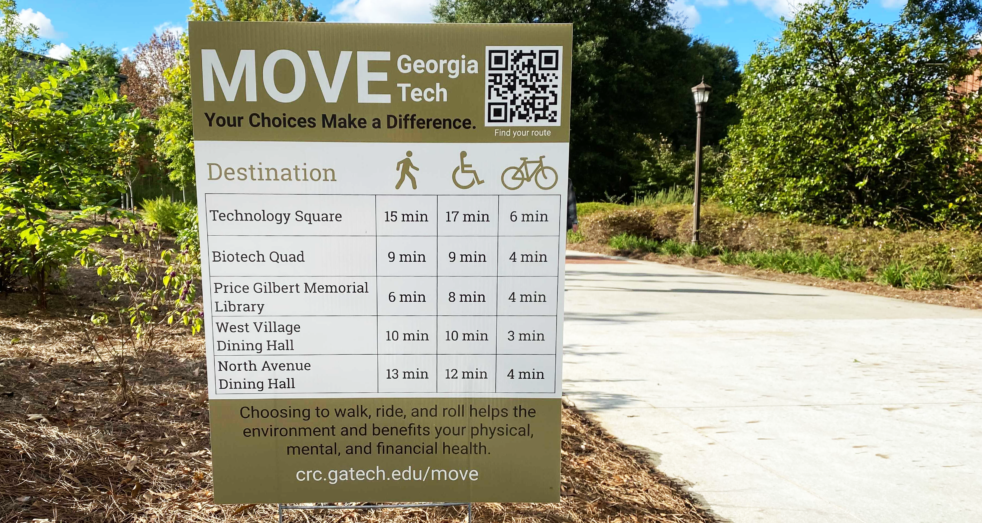As students returned to campus this fall, they may have noticed signs popping up around Tech encouraging them to skip the drive and travel by foot or bike across campus.
These signs are part of the MOVE Georgia Tech initiative, which seeks to get more students using active transport to benefit their mental and physical health.
“We need to include and celebrate every form of active transportation on campus,” said Becky James, organizer of MOVE Georgia Tech.
James said that her previous work focused on encouraging bike and scooter use around campus, but at the start of this year she was tasked with encouraging all active ways of transportation to increase students’ physical health.
James, who commutes to campus by bike, cited the impact active transportation can have on mental health as another reason for this initiative.
“Mental health is something that we actively have to include in our day to look out for ourselves,” James said, and she believes that biking or walking somewhere is one way that Tech students can bolster their mental wellbeing during the day.
The physical embodiment of the project came from an experience James had a few years ago, where she saw a sign at a bus stop informing riders that an eight minute bus ride was actually a twelve minute walk.
James noted that walking and biking could be highly efficient means of transportation compared to driving, and wanted to show Tech students how long it would take to get to various locations around campus.
James said she used a combination of Google Maps and Citymapper to find the travel times around campus.
Citymapper is a program specifically for calculating active transportation times, and is not based around driving like other mapping services.
From the two apps, James was able to list the average time it took someone by foot or by bike to get anywhere on campus.
James also said Citymapper recently added ADA-compliant times to its app, but she admitted that it is likely an incomplete data set. “As we go forward [with] MOVE Georgia Tech, I want to make sure that we’re learning more and really seeking those students that are on our campus and what kind of wheelchairs are there,” James said.
She also noted that some of the walk and bike times may be inaccurate because of individual variations in transportation speeds, but the estimates on the signs are still good guidelines on travel times.
The MOVE Georgia Tech initiative includes 30 physical signs posted around campus, which offer the travel times by foot, bike, or wheelchair to various locations around campus.
Each sign also has a QR code that brings up the Citymapper website to help students find the fastest route to anywhere on or around campus located on the sign.
In addition to the physical signs, the initiative also has digital signs that appear on monitors around campus.
Besides the benefit to students’ mental and physical health, MOVE also aims to reduce the individual carbon footprint of students.
“The biggest chunk of carbon emissions comes from the transportation industry,” said James, “and from that transportation sector, that largest piece is coming from individual vehicles.”
Tech is aiming to be a carbon neutral campus by 2050, and cutting down on individual vehicle emissions is an important part of that goal.
By encouraging students to walk, bike, or scoot around campus, the Institute hopes to reduce emissions from cars and buses, allowing for a start on the process of becoming eco-friendly.
If nothing else, James wants students to choose active transportation because it is much cheaper than owning and operating a car.
Walking or biking requires much less money to do over the course of a year and is a way to get exercise in, something that is often challenging for Tech students to do with a schedule crammed full of classes, extracurricular activities and friends.
James said all these factors make active transportation the much healthier and economically efficient choice for getting around campus, and she hopes to see the positive effects of the initiative begin appearing around campus, in both students and faculty, soon.
